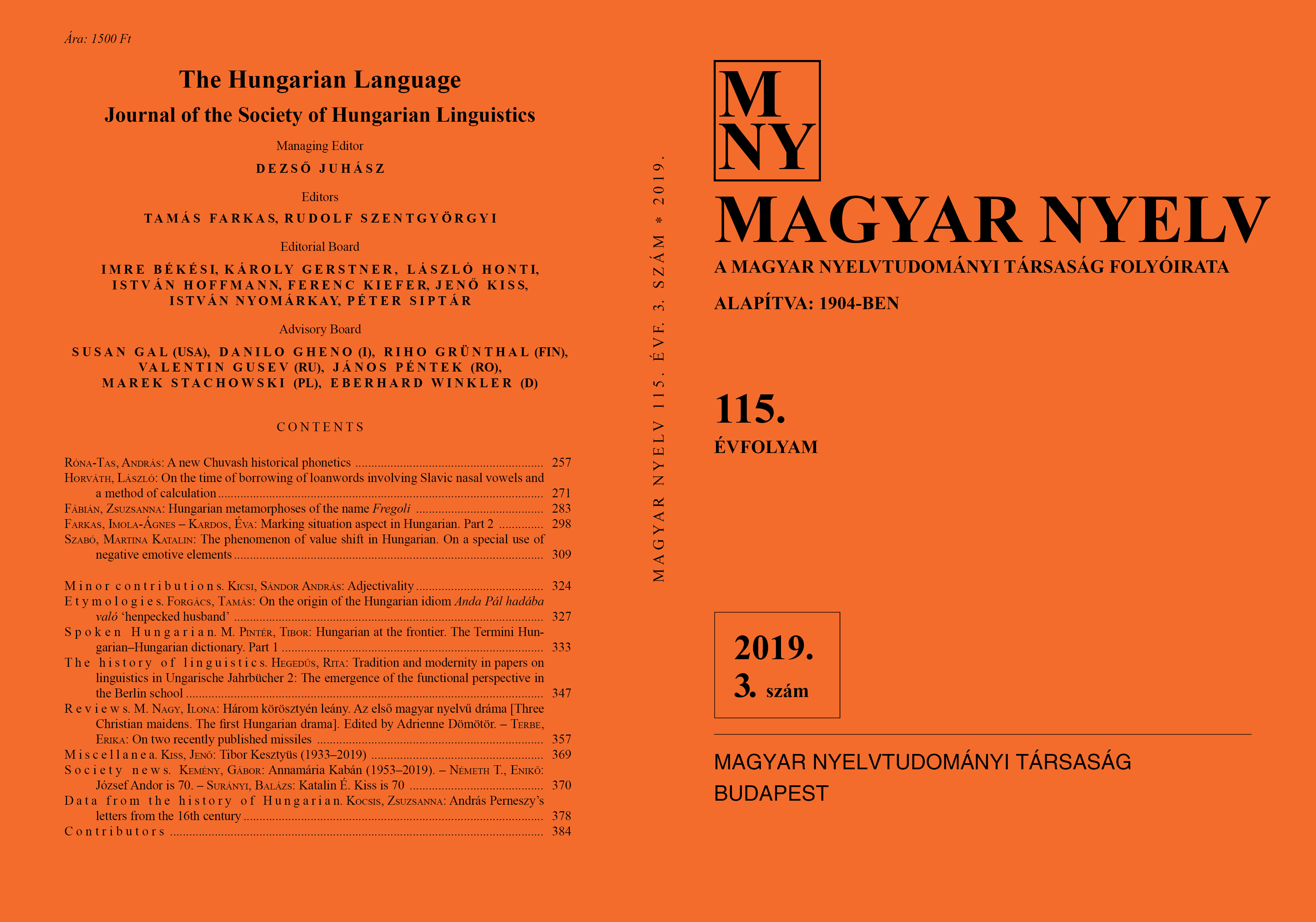On the time of borrowing of loanwords involving Slavic nasal vowels and a method of calculation
DOI:
https://doi.org/10.18349/MagyarNyelv.2019.3.271Keywords:
Slavic nasal vowels, denasalization, Slavic loanwords, timing, method of calculation based on attestednessAbstract
One of the topics of the present paper is the time of denasalization of Slavic nasal vowels (ę, ǫ) and, correspondingly, the timing of Slavic loanwords in Hungarian that still witness the existence of those nasal vowels (rend ‘order’, gomba ‘mushroom’, etc.). The author reviews the shared conclusion of traditional Slavistics and Hungarian historical linguistics, and shows why and how that conclusion is debated by András Zoltán, professor of Slavistics at the Budapest university. The other topic of the paper, closely connected with the first, is a method of calculation that a Slavist of Szeged, Mihály Kocsis, proposed on the basis of the time of attestation of loanwords in Hungarian reflecting the existence of Slavic nasal vowels. The present author claims that that experiment cannot have been successful and convincing due to the small number and limited length of the extant Old Hungarian (9–14th century) texts.
Downloads
Published
Issue
Section
License
Copyright (c) 2024 László Horváth

This work is licensed under a Creative Commons Attribution-NonCommercial-NoDerivatives 4.0 International License.
Magyar Nyelv is a Diamond Open Access periodical. Documents can be freely downloaded and duplicated in an electronic format, and can be used unchanged and with due reference to the original source. Such use must not serve commercial purposes. In the case of any form of dissemination and use, Hungarian Copyright Act LXXVI/1999 and related laws are to be observed. The electronic version of the journal is subject to the regulations of CC BY-NC-ND (Creative Commons – Attribution-NonCommercial-NoDerivatives).
The journal permits its authors, at no cost and without any temporal limitation, to make pre-print copies of their manuscripts publicly available via email or in their own homepage or that of their institution, or in either closed or free-for-all repositories of their institutions/universities, or other non-profit websites, in the form accepted by the journal editor for publication and even containing amendments on the basis of reviewers’ comments. When the authors publicize their papers in this manner, they have to warn their readers that the manuscript at hand is not the final published version of the work. Once the paper has been published in a printed or online form, the authors are allowed (and advised) to use that (post-print) version for the above purposes. In that case, they have to indicate the exact location and other data of the journal publication. The authors retain the copyright of their papers; however, in the case of an occasional secondary publication, the bibliographical data of the first publication have to be included.



